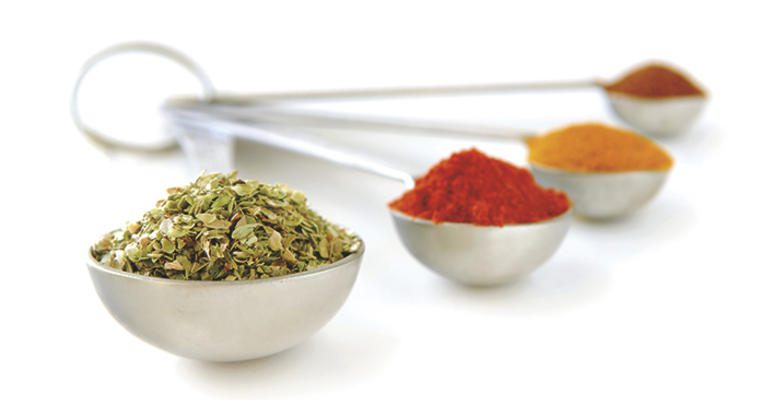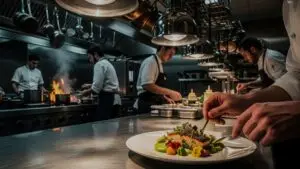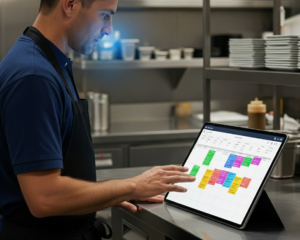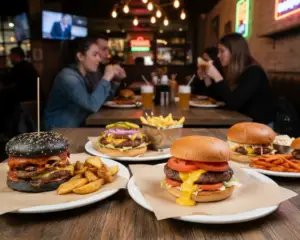The holidays can be a make-or-break time of year, and many operators get so busy—banquets on the weekend, large family tables to seat nightly, office parties to cater, entertainment to book, gift card sales to manage, etc.—it’s hard to know what’s working and what’s not in the heat of the moment.
But tracking results is essential to prevent your business from being haunted by the ghost of holiday failures past. Our team of Gordon Food Service experts say operators should start planning for the next holiday season right away, while the successes and challenges are top of mind. They have plenty of advice on measuring your holiday success and using that information to make the next holiday season brighter.
Mine your data
No matter how busy the days and nights, your POS system contains a wealth of information, says Houston-based Commercial Segment Leader Lisa Geagan.
“You always want to increase your guest count—it’s the one thing you can track year over year,” she says.
Improved sales and a higher check average are desirable, but she points out that one large event or the sale of a few expensive bottles of wine can skew those numbers. Guest count is a clear sign of success.
Data is the operator’s best friend, says Doug Clayton, a Brighton, Michigan-based Commercial Segment Specialist.
“Many operators do 60-70 percent of their business in one season,” he says. “If that season is during the holidays, you need to have a goal, measure your success using data, and then plan ways to improve based on what the data tells you.”
Track outside the box
If you use a reservation system like Open Table, you can create a file on customers, noting whether it’s a first or repeat visit, according to Kelley Lenahan, Southeast Division Business Solutions Specialist. You can also examine online metrics, collected outside the four walls of your business.
“These days everyone’s on Facebook, but many operators are unaware they can measure those analytics,” she says. “A Facebook business account lets you find out all kinds of numbers about potential customers clicking on your site, such as who, what, when and where they look.”
Facebook and google.com analytics are free, Lenahan says, and so is checking online reviews on yelp.com, tripadvisor.com or eater.com. “People will have very specific comments you can use to recognize successes or failures,” she says. “You can also investigate what people are saying about your competition.”
Breaking it down
Holiday-season foodservice has a lot of moving parts. Think promotions, menus, LTOs, gift cards, catering, social media, staffing … the list goes on. Any one of these can have a positive or negative impact on your holiday business, Clayton says.
Jim Milliman, a Tennessee-based Business Solutions Specialist, urges keeping records, either in a digital journal or using diary notes you can refer to after the holiday rush subsides.
“Plan first, and then plan to measure results—record promotions and the timing of communications, and also review sales projections and compare results,” Milliman says. “Nothing makes success easier than the ability to review in detail the notes of past successes.”
Lenahan suggests starting a “Holiday File”—one for each holiday important to your operation. It should include information on sales, customer count, LTOs, pricing, menus, hours, reservations, as well as staffing for the front and back of house.
“The seeds you sow during the holidays can create ‘raving fans’ for the next season or the next year,” she says. “But you have to place a high priority on core operational values, and keeping track of successes helps deliver the best guest experience.”
Here are some ways to gauge success in key areas:
Holiday promotions. Did your holiday marketing result in more people booking parties? Milliman says the amount of pre-booked parties for next year is a signal your promotions this year succeeded in setting your operation apart.
Menus. Geagan says not all operators launch new menus or even new items during the holidays. Success comes from solid execution of the regular menu—satisfying regulars and showing first-time guests what you’re all about. After the holidays, she suggests reviewing your product sales with your Customer Development Specialist. Examine what you bought and what you sold, and consult on ways to adjust your order accordingly, or alter prices to drive sales, or even refine your menu to better match guest preferences.
LTOs. Holiday themes can be very profitable marketing tool. Clayton says if you measure the success of holiday appetizers, special desserts, seasonal beverages and celebratory entrées, you may discover ways to create a similar mood and promote similar offers at Valentine’s Day, Mother’s Day or Easter.
“If your staff is trained to suggest holiday-season chef specialties—inspired by customers, for customers—then diners will feel like part of the experience,” he says. “What you’re doing is building a community of loyal customers you can bring back to increase market share.”
Gift cards. This is a growing part of holiday business, and something that can be tracked through your POS system. Geagan says you can track data on when the cards are redeemed, how many guests the user brings, and the check average.
Milliman says the sales numbers help measure holiday success. Selling more cards than the previous year (or increasing revenue on the cards sold) is a way to gauge success. He also reminds operators to track data from the people who are using cards when they come to eat.
“Gift cards are often given to a new customer by a friend who likes your restaurant,” he says. “Train your staff to engage with these new customers, or capture a repeat visit with a bounce-back promotion, like a free dessert with their next meal.”
Social media. You can collect a lot of data online, and offering a discount to the first 20 customers who mention your Facebook post or Tweet is one way to measure success. But this can also create a coupon mentality, where people won’t visit until there’s a special offer. That means social media is not as great a tool for measuring success as it is for driving success. “To your customers, social media not about ‘come get pie,’ it’s all about engagement,” Geagan says. “Share stories with them and hint at what’s ahead to build excitement for future holidays.”
Catering. Gauge your success by measuring repeat business, and make sure to send out notes to those you served, especially corporate customers likely to call you again, Lenahan says.
Analyzing your catering performance also is important, Geagan says. Review starting from the point the order was placed to the point the food was served. Track the cost of filling each order. Were paper goods needed? Serving utensils? Waste disposal. Catering should be more profitable than the regular menu, she says, so all of those costs have to be tracked and evaluated.
Staffing. Operators are always looking to add quality employees, Milliman says. The holidays allow you to hire temporary people and watch them perform. Clayton says those with high morale and the ability to create buzz at the table that translates into sales of your holiday specials are keepers. “Ask them for referrals so you have a pool of candidates to call upon—at the very least, those people might be your temporary workers next season.”




























